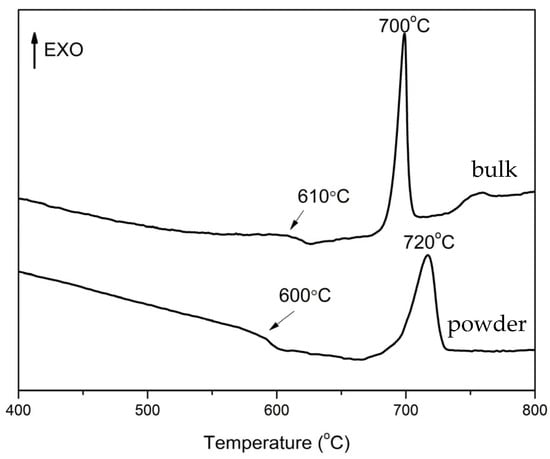In recent years, rare earth-based tungstates have gathered increased attention as host materials due to their distinct crystal structure, remarkable emission properties, strong near-ultraviolet (NUV) absorption, thermal and chemical stability, low hygroscopicity, environmental friendliness, and self-activating luminescence properties. In addition, tungstates exhibit a broad charge transfer band (CTB) in the range of 200–350 nm. The CTB can transfer energy to rare earths, making them ideal for UV excitations [1]. In fact, rare earth tungstates are a big family including various compounds of RE2W3O12, RE2WO6, RE6WO12, RE2W2O9, RE10W22O81, and so forth, according to W/RE stoichiometry, and can be viewed as pseudo-binary compositions between RE2O3 and WO3 [2,3]. Among the rare earth tungstates, the compounds of La and tungsten are of great potential for luminescent host materials. For example, La2W2O9:Eu3+ shows promising photoluminescence and has a quantum yield as high as 77% [3,4,5,6]. La2(WO4)3:Tb3+ phosphors were successfully synthesized via an optimized microwave-assisted co-precipitation technique [7]. The luminescence characteristics and structural analyses of Sm3+-activated La10W22O81 microphosphors were also reported [1]. Eu3+:La10W22O81 (LWO) microphosphor rods with intense red emission were synthesized using a hydrothermal-assisted solid-state method [8]. To the best of our knowledge, there are no data for the preparation of lanthanum tungstate glass-ceramics by controlled glass crystallization. In recent years, a great deal of attention has been paid to rare earth-doped glass-ceramic materials, which play a crucial role in many optical applications such as up-conversion fibers, solid-state lasers, medical sensors, optical electronic chips, luminescence labels, optical amplifiers, 3D displays, etc. [9,10]. Glass-ceramics possess excellent characteristics found in both glasses and crystals and have none of the disadvantages of these two materials. Similar to glasses, glass-ceramics have a large capacity for accommodating an active rare earth dopant, are isotropic, and have evenly distributed activators within their bodies. Similar to single crystals, glass-ceramics contain rare earth ions within strictly ordered ligand surroundings. As a result, the presence of a crystalline environment around a rare earth ion allows for high absorption and emission cross-section reduction in the non-radiative relaxation process because of the lower phonon cut-off energy and tailoring of the ion–ion interaction by control of the rare earth ion partition [9,11]. The glass-ceramic materials are usually obtained by subsequent thermal treatment of a glass, which is first melted and annealed as usual. This conventional method relies on thermally induced phase separation and in situ crystallization processes, which are, however, very complex to experimentally control [11]. The choice of an appropriate glass composition is very important for luminescent glass-ceramics elaboration. The search for more efficient glass compositions and guiding structures for rare earth-doped glass-ceramics continues. In our earlier paper, we determined the glass formation region in the ternary La2O3-B2O3-WO3 system. It was established that transparent colorless glasses are obtained in the central part of the system between 20 and 35 mol% La2O3 [12]. We have also studied their structure and crystallization behavior. The main crystallization mechanism in the glasses is the surface crystallization, and the glass in mol % of 50WO3:25La2O3:25B2O3 is crystallized as a single phase LaBWO6 [13]. The luminescence properties of an Eu3+ doped glass, glass-crystalline product, and polycrystalline sample with the same composition of 50WO3:25La2O3:25B2O3 have been verified [12]. It was found that the intensity of emission increases drastically in the glass-crystalline sample consisting of LaBWO6:Eu3+ nanocrystals compared with the glass and polycrystalline samples. These results provoked our interest in continuing the investigation into an La2O3-B2O3-WO3 system. The purpose of the present study is to investigate the crystallization behavior of one selected glass composition from the isothermal section LaBWO6-La2W2O9 of the phase diagram [14] in order to check for the possibility of obtaining lanthanum tungstate glass-ceramics doped with Eu3+ ions and to study their photoluminescence properties. The crystallization behavior of glass-ceramics was characterized by X-ray diffraction and transmission electron microscopy. Emission spectra were measured, and color coordinates of the materials were determined.
Source link
Aneliya Yordanova www.mdpi.com

